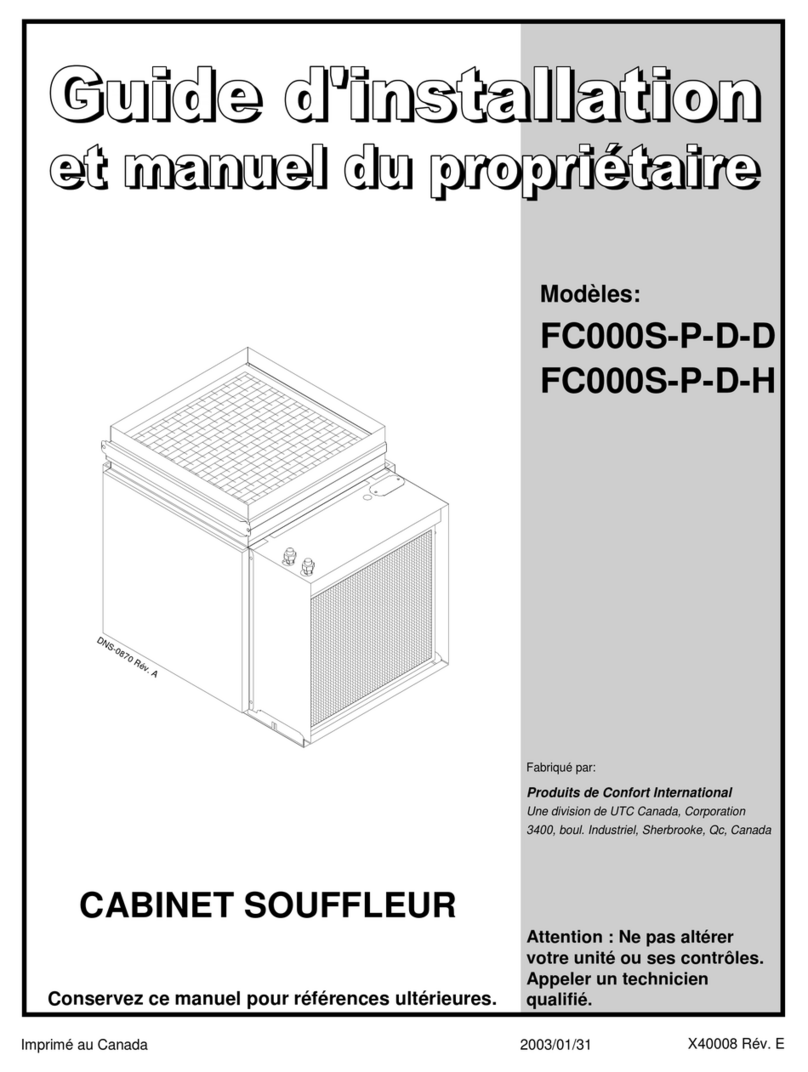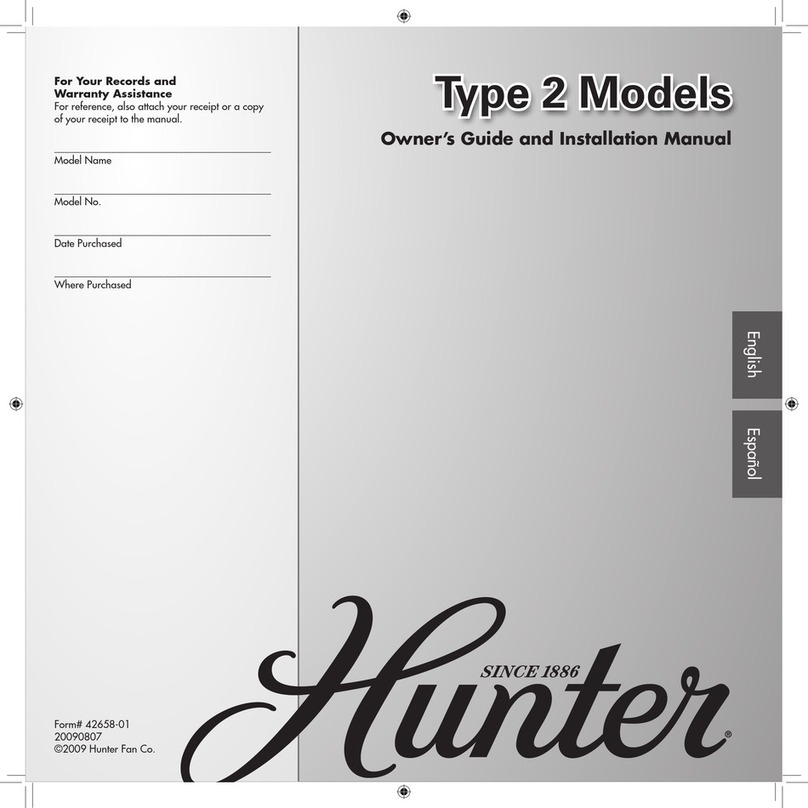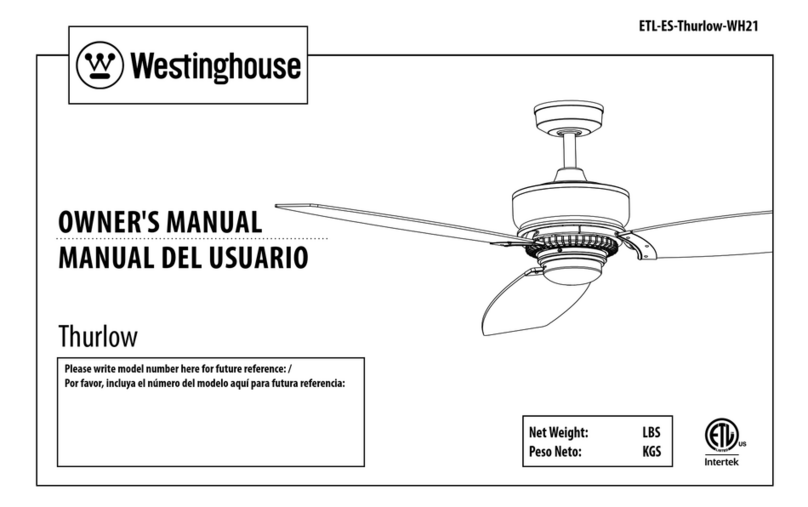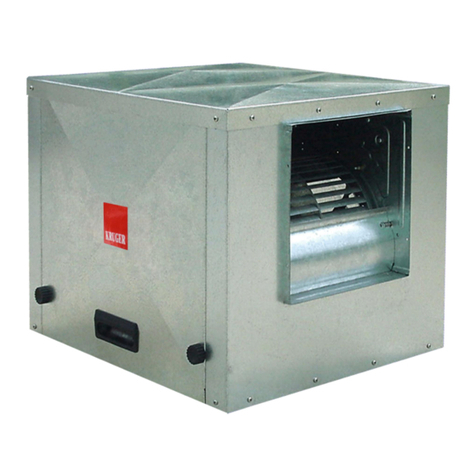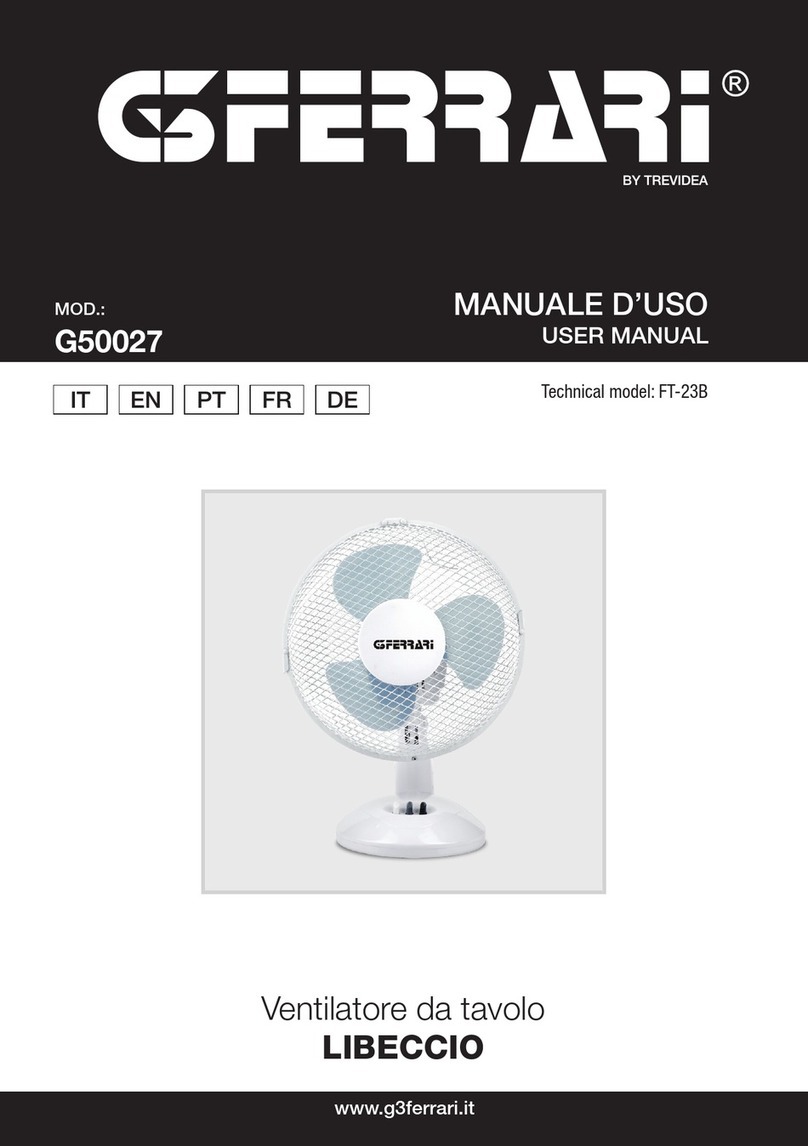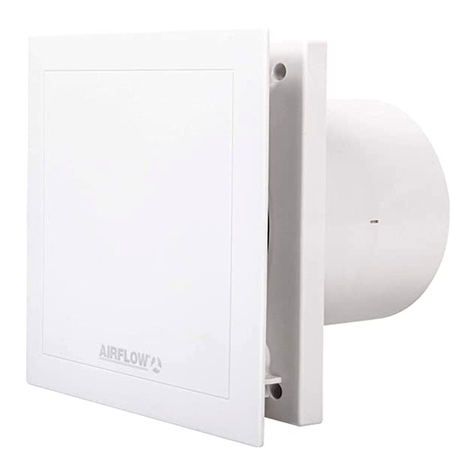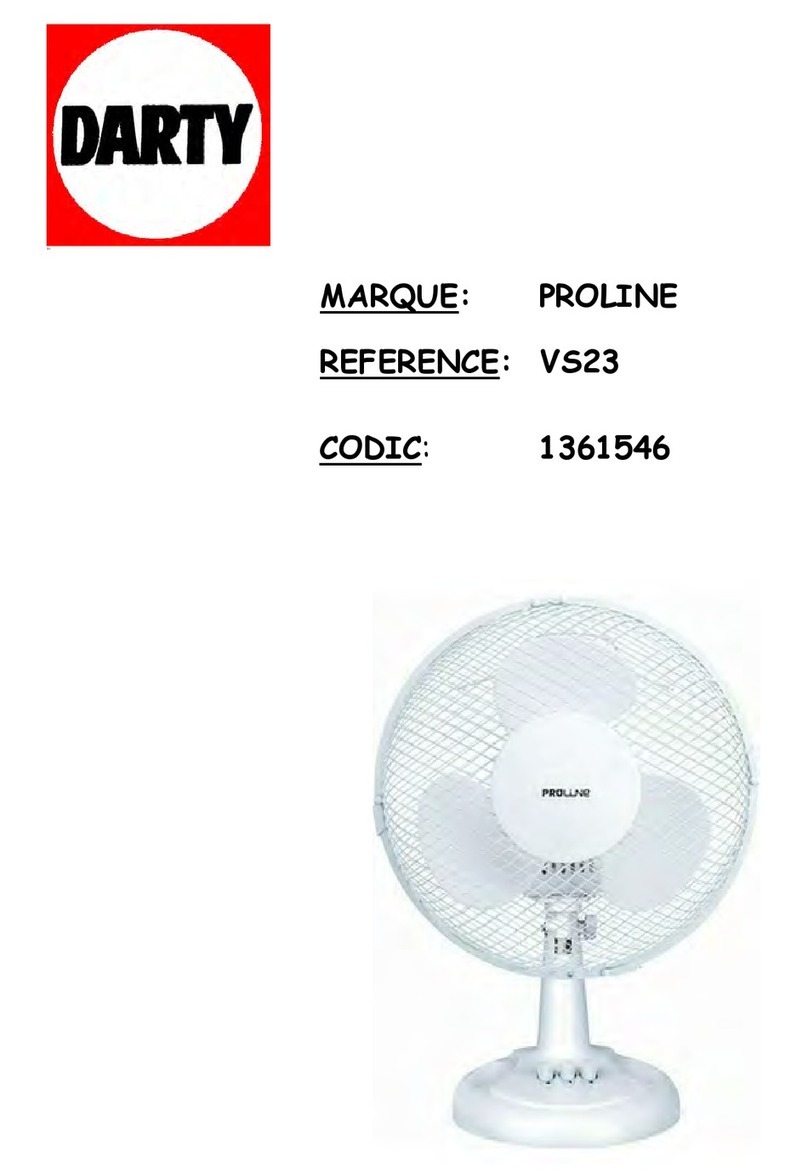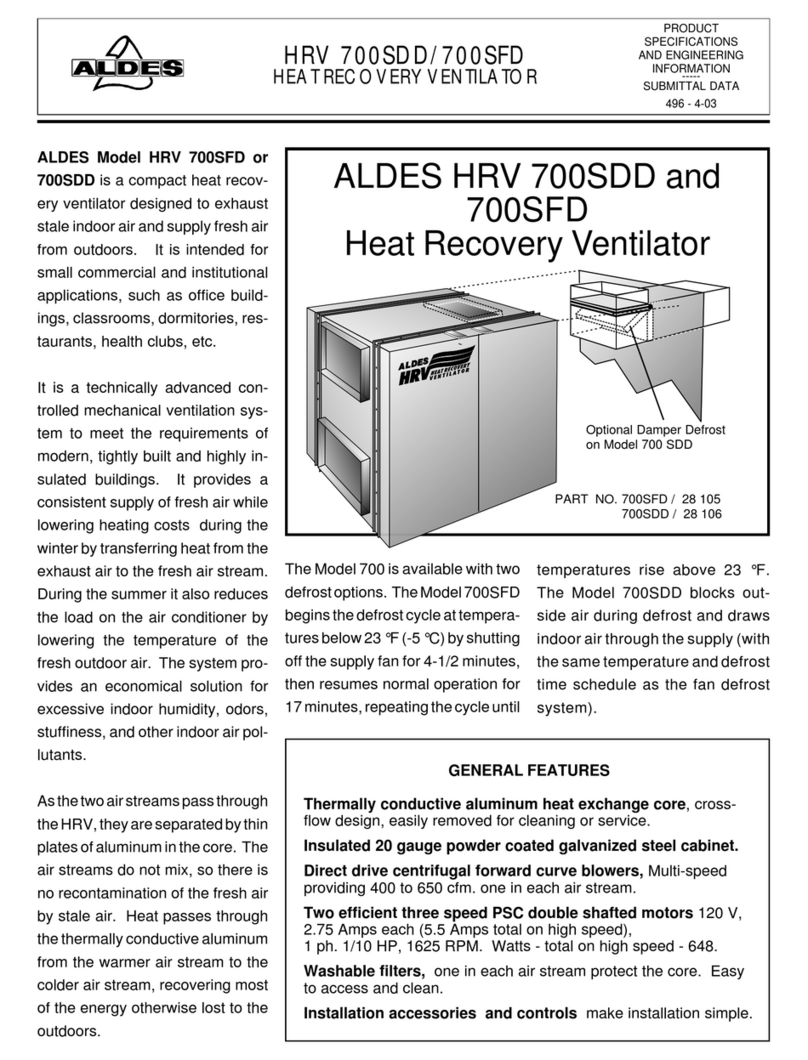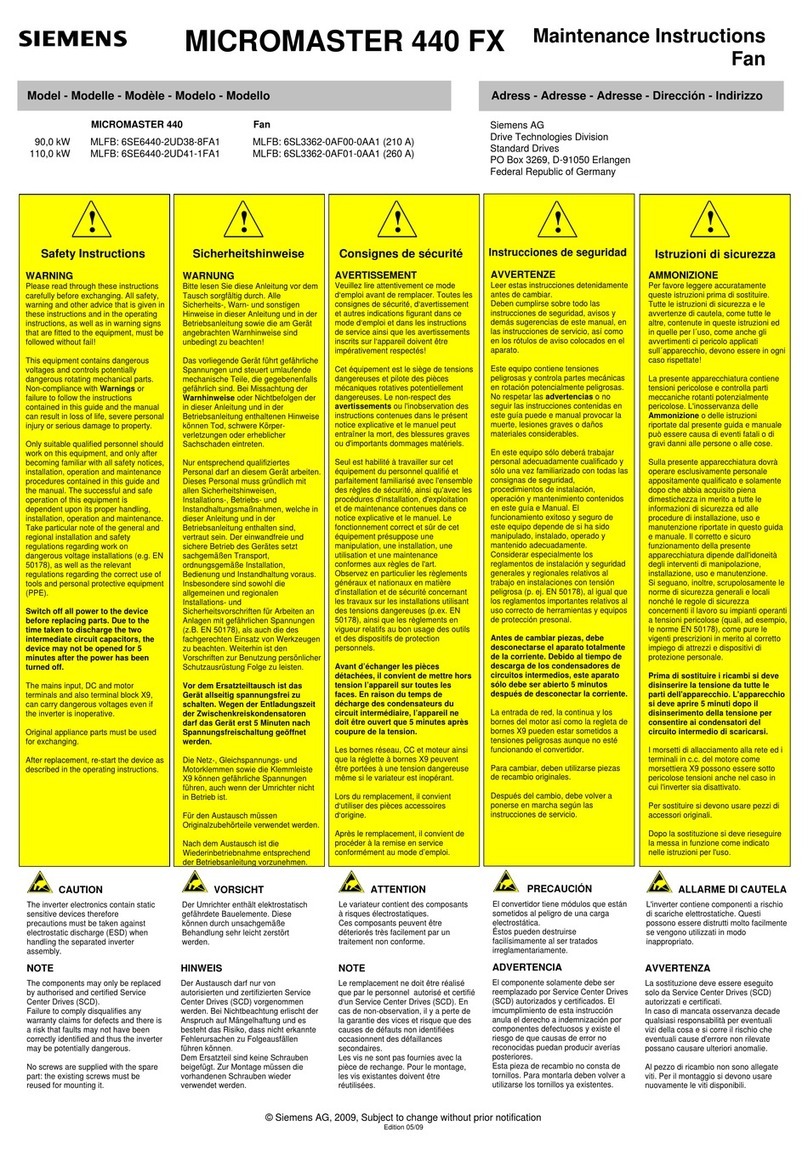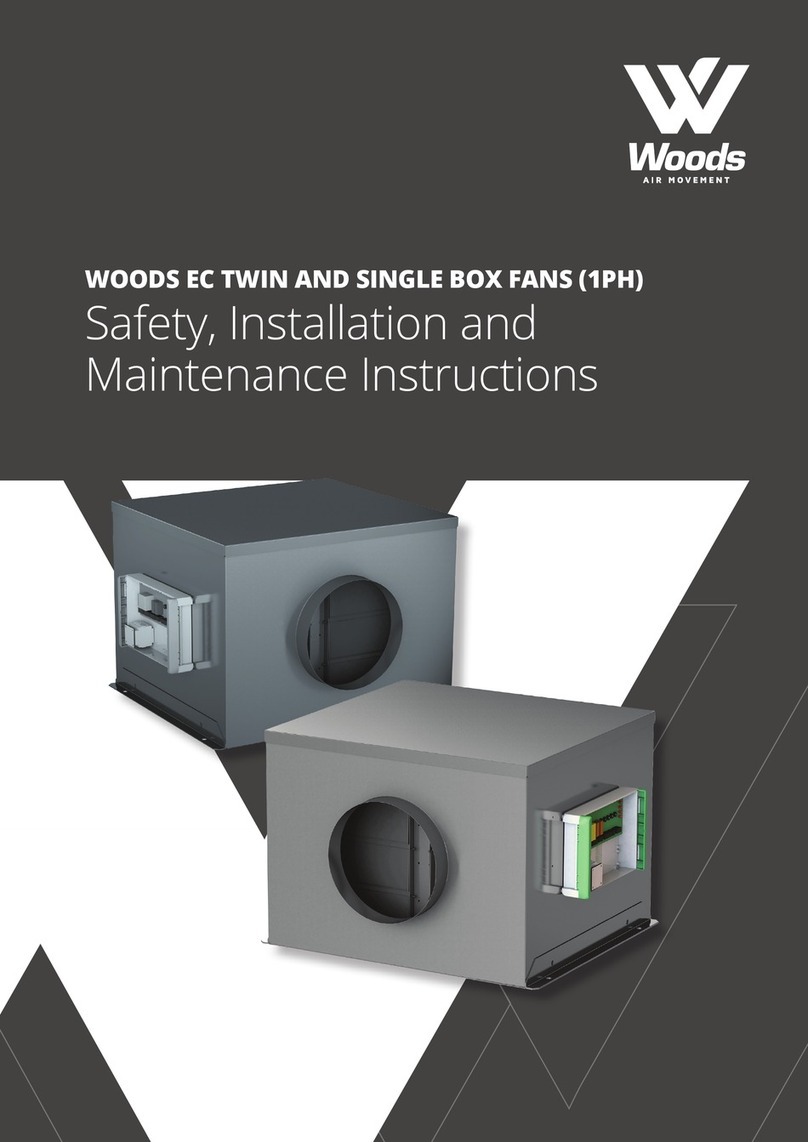
10
15. MECHANICAL INSTALLATION
DANGER!
It is recommended that suitable safety guards form part of the Installation. Such devices, and advice on safety
devices, are available from Woods Air Movement.
WARNING!
Where the fan is delivered in a crate (or similar), the crate must be considered as a protective device only, and
must not be used as a lifting aid unless otherwise indicated.
WARNING!
All lifting aids used during installation must be adequately certied to carry the weight of the equipment being
lifted.
WARNING!
Always wear appropriate protective clothing (including hard hats, eye protectors and ear defenders)
when working in the vicinity of the fan assembly.
WARNING!
During lifting of the fan all personnel must be clear of the area below the suspended fan.
NOTE!
Before fan assembly installation, check that no damage has occurred in transit, that there is no fan casing
deformation, that the impeller rotates freely and that the fan and motor nameplate data complies with its use
requirement. If the fan assembly has been stored (for an extended period) the motor winding resistance to earth
must be measured (at 500V dc). Where any reading is less than 10 MΩ (Megaohm), the motor must be dried out
and re-checked before it is switched on.
Fan assemblies can sometimes be very heavy (depending on fan and motor size and which ancillary equipment has been tted,
such as silencers, guards and bellmouths etc.), which can make them unwieldy during handling. They must therefore be lifted
slowly to prevent damage or distortion. Proper precautions must be taken, and certied lifting aids used, to ensure that the fan
is well supported and stable before lifting into position.
Flange holes or mounting feet holes can be used for lifting but more than one hole must be used to spread the load.
If special lifting points are provided, they must be used. The fan must be installed such that it is correctly positioned in
accordance with the required airow direction. An airow indication arrow is shown on the fan nameplate. For two-stage,
contra-rotating fans see Figure 1 (on page 18).
Sharp bends in the ductwork close to the fan must be avoided. Adequate room must be allowed round the fan for inspection
and maintenance. Component parts of the fan assembly, including (if tted) anti-vibration mounts, silencers, bellmouths,
air operated dampers, exible connectors (and their clips), purlin boxes, weather proong, platforms, supports, chains and
harnesses, etc. must be fully aligned before being bolted together so that no distortion or stress is placed on the equipment.
Air operated dampers must be installed downstream of the fan (on the fan discharge) to ensure that fan performance is
not adversely impacted.
Appropriate xings, with the correct torque applied, must be used to secure the fan into position. If in doubt, please contact
Woods Air Movement for advice related to torque settings for each xing. The fan mounting and support structure must be
strong and rigid enough to take the weight and operating forces of the fan and any other weight applied during installation.
Vibration isolators must be appropriate for the weight and thrust of the fan, in order to minimise the transmission of fan
vibration to surrounding structures. When vibration isolators are used, exible connectors and exible electrical conduit must
also be used. Vibration isolators and exible connectors must not be used to compensate for misaligned component xing
points. If any component parts do not easily t together the root cause must be investigated and rectied.
A drain hole is included within in each motor end cover and electrical connection terminal box. The motor drain hole must
be located at the lowest point of the motor, when the fan is installed. Plugs which close drain holes should either be removed
entirely (if condensation is liable to occur due to large variations in operating temperature) or removed periodically to allow any
general build-up of condensation to drain away. The frequency of plug removal will depend on by environmental conditions
and should be recorded within maintenance records. Where bifurcated fans have their airow axis horizontal, then the ‘motor
tunnel opening’ must be facing downwards between the 3 o’clock and 9 o’clock positions, in order to minimise the risk of water
ingress.
After installation all packing materials must be disposed of in accordance with Paragraph 20 (page 15).
11
16. ELECTRICAL INSTALLATION & OPERATION
DANGER!
No work must be attempted before completely isolating the fan assembly, its anti-condensation heater
(if tted), and its controls from all electrical supplies. Ensure that rotating parts come to rest.
WARNING!
Before entering the area where the fan is installed, please ensure that all fumes, dust, toxic emissions,
heat etc. have dispersed from the local environment, and that the fan blades are not likely to rotate.
DANGER!
The fan assembly contains rotating parts and electrical connections which can be a danger and cause injury.
If there is any doubt that a safe and reliable fan installation can be assured; Woods Air Movement or their
representative must be contacted for advice.
WARNING!
If the fan assembly is designed for high-temperature emergency-use; it is imperative that the wiring used is rated
and designed for the appropriate high temperature category, and that all switches and controls are overridden
during the emergency operation. Only Frequency Converters which have been fully tested and certied in
accordance with EN12101-3:2015 may be used.
CAUTION!
If the fan stops operating due to an overheat situation, the overheat protection thermostat may reset as
the temperature cools and then automatically restart the fan if power is still applied.
WARNING!
Always wear appropriate protective clothing (including hard hats, eye protectors and ear defenders etc.) when
working in the vicinity of the fan assembly.
Each fan assembly has either a terminal box mounted on the motor or on the fan duct. The fan assembly electrical supply must
be connected to the terminal box by a qualied and competent electrician. It is good practice to t a clearly marked isolator
switch close to the fan. In addition, we recommend the use of a second clearly marked and accessible switch remote from the
fan. Using two switches provides an enhanced level of safety when isolating the fan during maintenance.
A suitable earth must also be connected. Sucient cable length must be provided to allow for movement of the fan on
its mountings.
A connection diagram providing wiring details is supplied with all fan assemblies (typically inside the terminal box lid). Figures
3 to 12 (pages 19 to 23) show wiring terminal details for smaller fans. Figure 2 (page 18) shows the correct assembly sequence
of terminal box parts, and recommended torque values to be applied. It is essential that no lock washers or nuts are used
between the motor lead eyelet, connecting link or customers supply lead eyelet (when tted).
Electrical control circuit Fuses must be correctly selected to carry the rated starting current as indicated on the motor or
fan nameplate but should only be regarded as oering protection against wiring short circuits or earth faults. Fuses are not
designed to provide overload protection. To provide full protection for the motor, a starter panel with overload protection must
be used. We also recommend that an electrical isolator switch is incorporated into the connection circuit and that it is of the
lockable type, which will allow the operator or maintenance engineer to isolate the fan from the electrical supply before working
on the assembly.
If a speed controller, or other control equipment, forms part of the system it must be able to control the fan within safe limits.
When running fans at low speed, care must be taken to ensure that any shutters (dampers), which may be mounted in the
airow, will open and operate correctly. Control equipment should be securely located, and should not be, or cause,
a radiation hazard.
For single phase electrical supplies, three-wire speed control is preferable to the two-wire control method. Two-wire control can
be used for motors up to a full load current of 3 amps, but above 3 amps three-wire control is recommended to avoid increased
temperature rises within motor windings. Care must be taken to ensure that the fan motor is suitable for speed control. Please
contact Woods Air Movement for advice on all forms of speed controller and other control equipment supplied by the Company.
Speed controllers must not be used without prior agreement with Woods Air Movement.
Fans with a duct-mounted terminal box must have their electrical supply cables routed through an entry point in the
side of the box. Unused entry points must be sealed with weatherproof plugs or grommets. Fans with a motor-mounted
terminal box must also have its electrical supply routed through an entry point in the side of the terminal box.
Cables must be routed via a gland assembly. The gland assembly should be tightened suciently to hold the cable
and provide a weatherproof seal, but it must not be over-tightened.


















